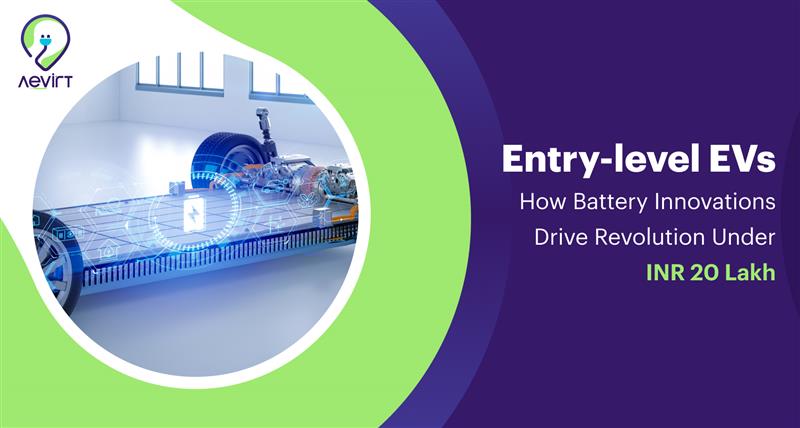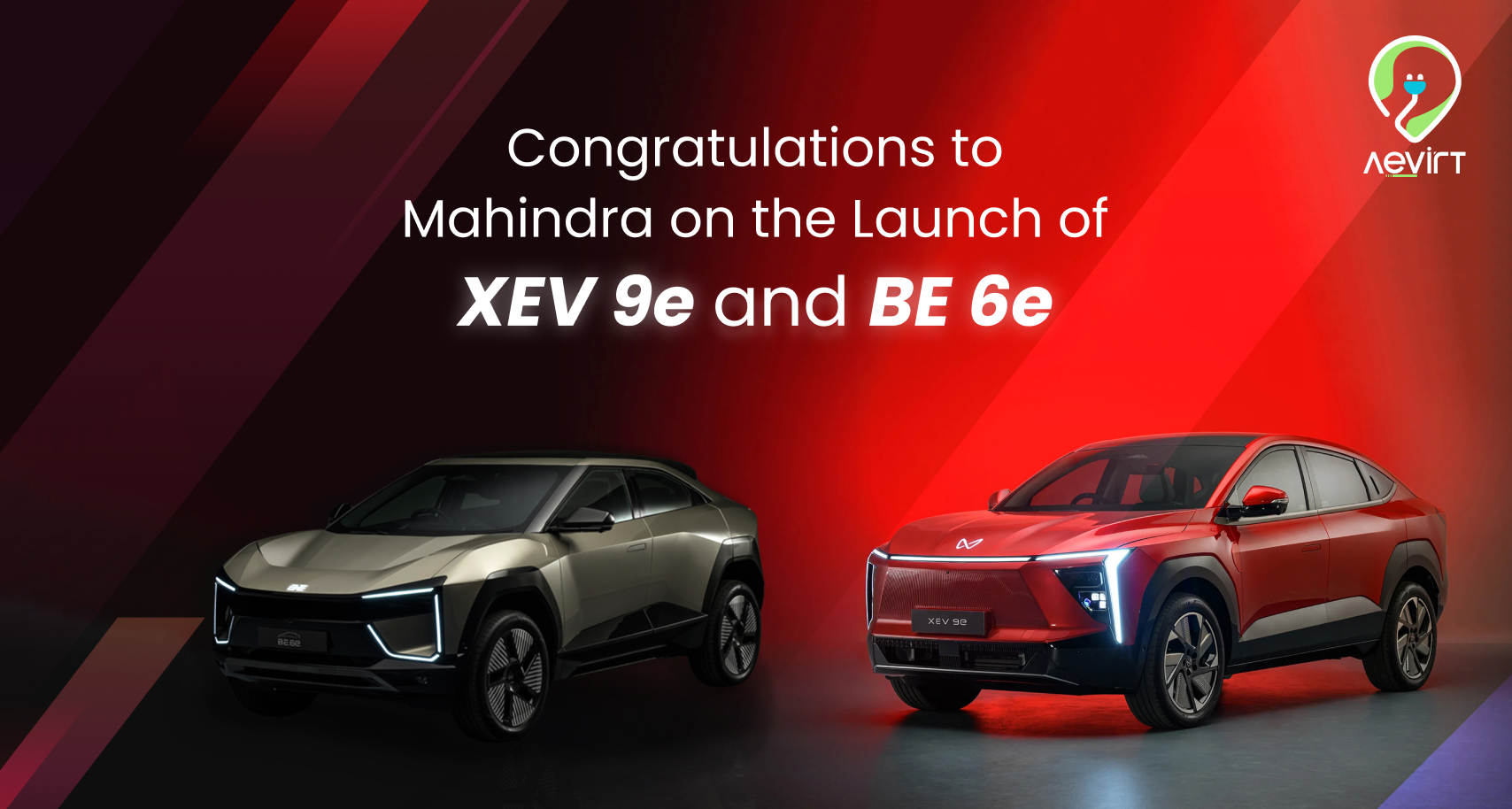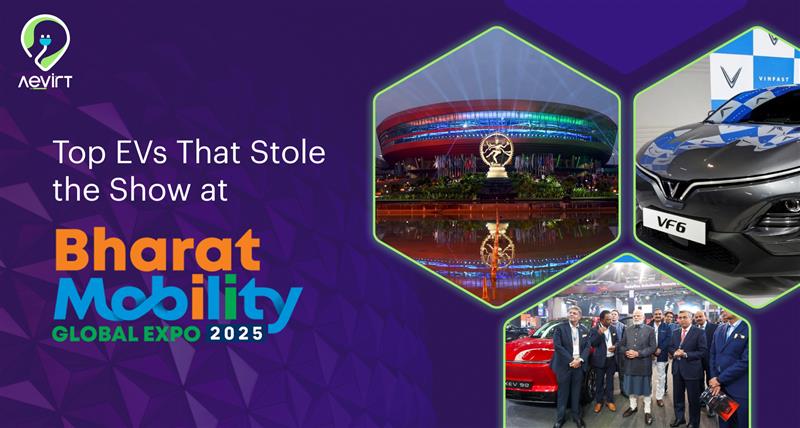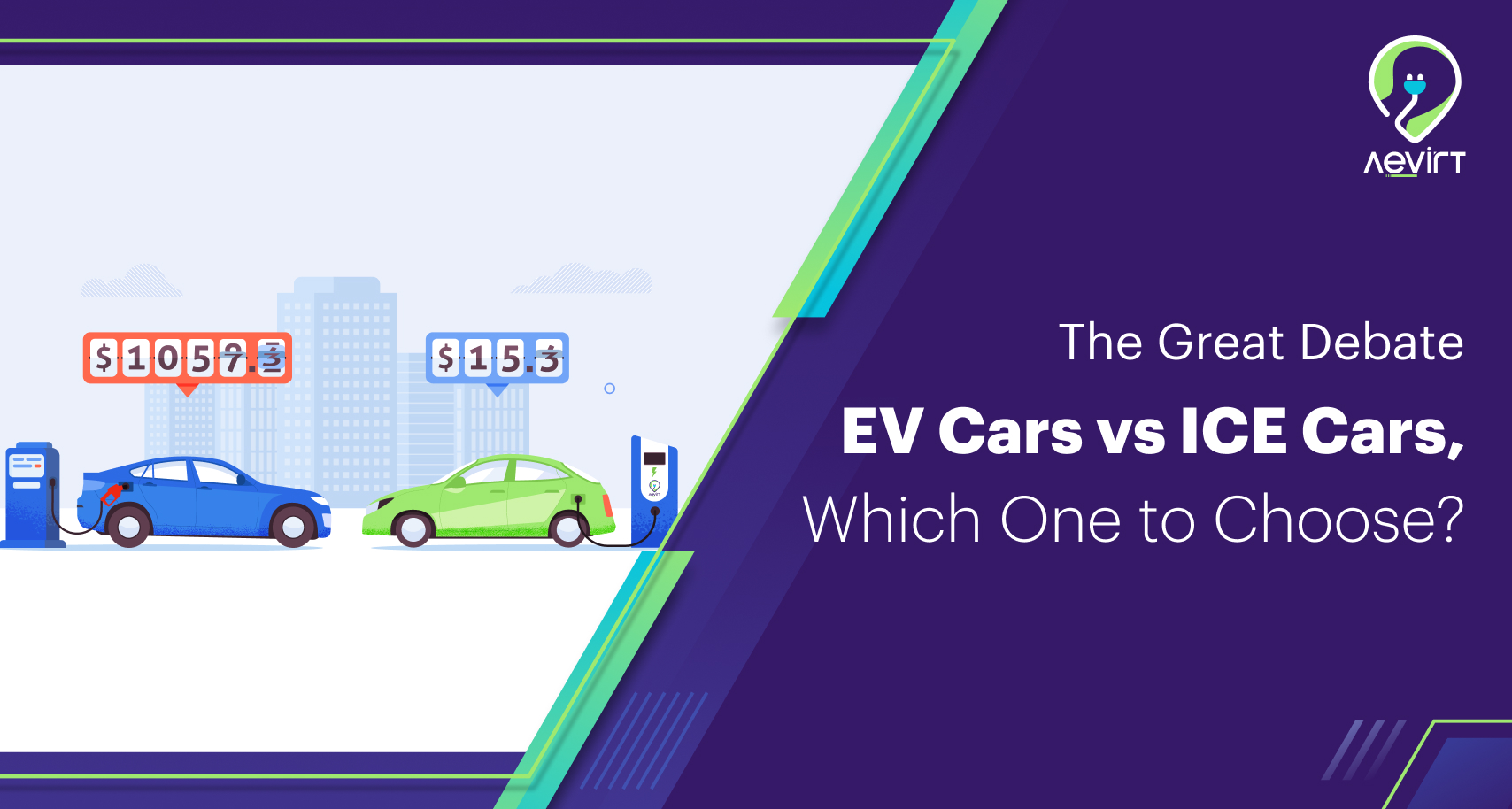Entry-level EVs: How Battery Innovations Drive Revolution Under INR 20 Lakh

It’s critical to make EVs more affordable to keep its sector progressing rapidly.
One such exciting trend is the rise of availability of E-cars priced under INR 20 lakh (entry-level EVs), making EV transportation affordable and within reach for every segment of customers. However, affordability isn’t just about MRPs; it also depends on the advancements in battery technology that make EVs more cost-effective and efficient.
Innovations in EV batteries lower production costs and also boost vehicle performance. But for the entry-level EVs segment to truly flourish, other factors are equally crucial, such as a strong charging infrastructure and easy access to tools that support EV ownership.
In this blog, we will explore how advancements in EV battery technology, paired with Government incentives, building reliable and strong charging infrastructure, and tech solutions for finding EV chargers, are driving the future of affordable EVs in India.
The Surging Demand for Budget EVs
As customers increasingly prioritize affordable and sustainable transportation options, the demand for EVs priced under INR 20 lakh is steadily growing.
This shift is largely driven by rising awareness of environmental concerns and government support in the form of tax breaks, subsidies, and reduced registration fees. These initiatives make budget-friendly EVs an attractive choice for cost-conscious buyers.
With automakers like Mahindra & Mahindra and Tata Motors, along with proactive government policies, the entry-level EVs are poised to become a key pillar of India’s electric mobility revolution. These affordable E-cars not only lower the entry barrier for first-time EV buyers but also appeal to those transitioning from traditional internal combustion engine (ICE) vehicles.
Latest Battery Innovations Backing Affordable EVs
Battery technology plays a pivotal role in making EVs cost-effective and accessible, especially in this particular EV segment. Here’s the list of the latest innovations that EV battery manufacturers are planning to implement to cut the actual cost of EVs:
-> Developing Lithium-iron phosphate (LFP) and solid-state batteries are transforming the industry by enhancing energy efficiency, cutting development costs, and extending the vehicle range.
-> Nickel Manganese Cobalt (NMC) battery technology is widely used in EVs because of its high energy density, long cycle life, and balanced performance between efficiency and power.
-> Other advancements that automakers are exploring include BaaS (battery-as-a-service) and battery-swapping stations. They provide great flexibility and convenience to EV owners. It reduces charging time, lowers cost by separating the battery from ownership, and improves access to charging stations in both rural and urban areas.
Together, these innovations are making EVs affordable and also building a widespread stage for the adoption of these vehicles.
Real-life Example of EV Battery Innovations
One of the recent launches of the MG Windsor EV has been an essential growth driver for the EV market. It is priced at INR 9.99 lakh and introduces a unique BaaS model. This approach separates the vehicle cost from the battery price, allowing consumers to pay for the battery based on usage at the rate of INR 3.5 per kilometer.
Improved EV Charging Infrastructure: Another Key Component for EV Growth
With the expanding EV market, it’s necessary to keep the EV charging infrastructure accessible and available, as it will play a pivotal role in accelerating EV adoption.
Even with improvements in affordable EVs, adoption rates hinge largely on a robust network of charging stations that can meet the growing demand. The lack of charging options, especially in rural or remote areas, has been one of the significant barriers to widespread EV adoption.
A collaborative effort from EV manufacturers, policymakers, and service providers is essential to address these challenges and to build a comprehensive, easily accessible charging network. Solutions like mobile apps such as Aevirt, which connect EV owners to nearby charging stations, along with fast-charging infrastructure, are crucial in ensuring that EV owners can easily charge their vehicles—whether they are at home, at the office or business or on the road.
How is Aevirt Contributing to the Growing EV Adoption Revolution?
Aevirt plays a pivotal role in minimizing the gap between EV owners and EV charging stations and supports them throughout their trips.
Our mobile app provides an innovative solution by helping EV owners easily find EV charging stations near them. By using the Aevirt app, you can quickly find reliable, affordable, and functioning EV charging points nearby and make your EV journey more convenient.
Another feature that sets Aevirt apart is its functionality of helping EV charging station owners register and showcase their station’s location on the map. So, if you are a station owner or have a free space where you can install an EV charging station, contact Aevirt now! It opens an amazing opportunity of generating a side income from your EV charging station.
This platform encourages the expansion of the charging network by increasing its visibility for station owners and providing important data for consumers.
By simplifying the process of finding and registering charging stations, Aevirt helps create a more interconnected and accessible EV ecosystem, attracting more consumers towards joining the green revolution.
The Future of Affordable EVs
The future of affordable EVs looks promising because of the continuous advancements in the batteries and charging infrastructures. With innovations such as solid-state batteries and BaaS, the cost continues to decline, making EVs more affordable and efficient.
Moreover, with the expansion of the charging network, the convenience of owning and operating an EV will increase and create a seamless EV ownership experience for consumers.
With growing support from both private and public sectors, we can expect the entry-level EV segment to become a major force in India’s shift to sustainable transportation.
Conclusion
Battery innovations and better EV charging infrastructure are set to play a transformative role in the growth of the EV market, particularly in the entry-level EVs (sub-INR 20 lakh) segment.
As battery costs continue to drop and new technologies emerge, affordable EVs are becoming a popular and attractive alternative for consumers looking for budget-friendly EVs.
If you already own an EV or are planning to purchase one, make Aevirt a part of your routine today. This application helps you overcome daily EV charging challenges and even lets the EV station owners register and generate a side gig.
Download the Aevirt app today (Play Store /App Store) and become a part of the growing EV family across the globe.


